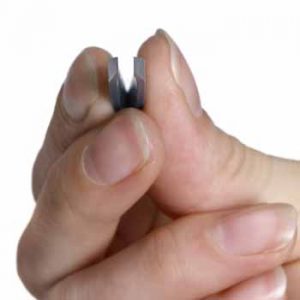
More evidence that low-calorie sweeteners are bad for your health
Studies show that artificial sweeteners can raise the risk of hypertension, metabolic syndrome, type 2 diabetes and heart disease, including stroke.

It’s such a common injury that most of us don’t even think about it. But a splinter can cause a surprising amount of pain and if not removed promptly and completely can become infected.
Splinters come in all shapes and sizes and most of the time they are easy to remove with the right tools and technique. To remove an easily accessible splinter try this first:
Wash and dry the area Before you begin, wash your hands and the affected area with soap and water and gently pat your skin dry.
Use your eyes first If the splinter is very small, use a magnifying glass to see how big it is and which direction it entered the skin.
Use tweezers Don’t be tempted to try and squeeze out a splinter, as this may cause it to break into smaller pieces that are harder to remove. Use tweezers (with a fine point if you have them) that have been sterilised in boiling water or alcohol first. If part of the splinter is sticking out, you can use tweezers to gently pull the splinter out in the same direction that it entered the skin.
When to use a needle If the entire splinter is embedded under the skin, you can use a small needle to remove it. First, sterilize the needle and your tweezers as above. Use the needle to gently pierce the surface of the skin at one end of the splinter and then use it to push the end of the splinter up. Use a magnifying glass may help you find the right spot and if the splinter is in deep you may need help from a friend or family member. Continue to use the needle to carefully push the end of the splinter up. Once one end of the splinter is sticking out, use the tweezers to gently pull it out.
Use a balm or ointment After the splinter has been removed, clean the area with soap and water and a soothing balm such as hypercal ointment or arnica balm. Keep the area covered with a bandage until it heals.
For really stubborn splinters
If a splinter is deeply embedded, try wrapping it in a clay pack first.
To make a clay pack, mix your clay (bentonite clay, has the strongest drawing action) with enough water to make a paste which has the consistency of toothpaste. Apply directly to the affected area, cover with a clean dressing and secure with a plastic bag/waterproof covering and/or other bandages. You may need to leave it on for several hours or overnight or until the clay is dry. This should help draw the splinter out enough so that you can use the methods above to remove it.
You can also use slippery elm, which also has a good drawing action, as a poultice in the same way.
Homoeopathic remedies that can help draw out stubborn splinters include:
Hypericum 30 – if it is very painful. Take on tablet 3 times a day for 2-3 days.
Sililca 30 – to help encourage the body to expel the splinter. Take one tablet 3 times a day for 2-3 days.
Essential oils of lavender and tea tree can help draw the splinter out and keep the area free from infection. Apply 2-3 drops neat to the affected area and cover with a bandage.
If you are really having trouble removing a splinter, or if it is in a delicate area, such as near the eye, seek professional help.

Please subscribe me to your newsletter mailing list. I have read the
privacy statement